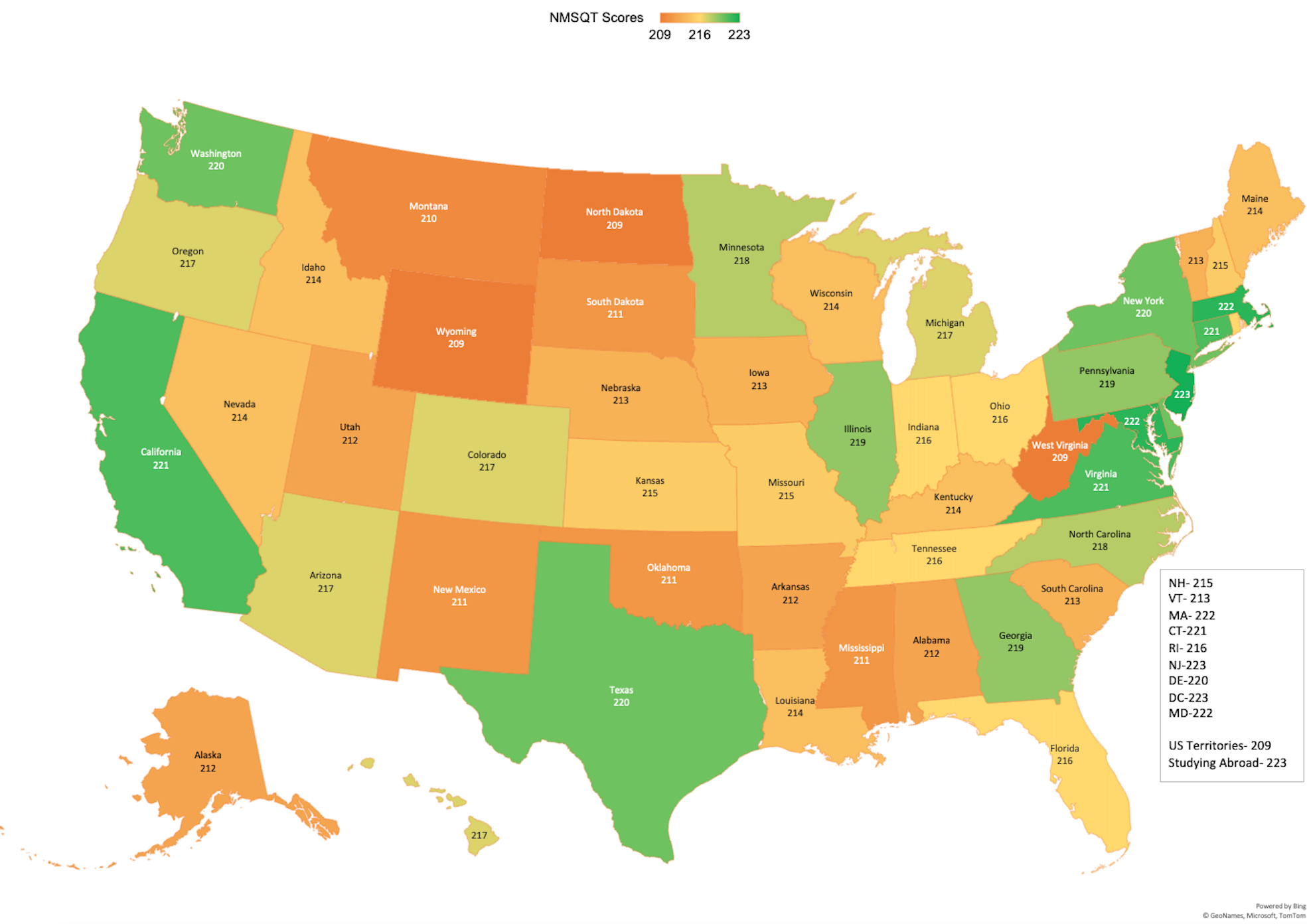The PSAT/NMSQT, which most students treat primarily as an easier practice version of the SAT, serves as the qualifying test for the National Merit Scholarship Program. The PSAT has been a digital adaptive exam, just like the SAT, since 2023.
Here's everything you need to know about how PSAT scores work, including the score you need if you're hoping to become a National Merit Semifinalist.
PSAT scores: the basics
Though the PSAT and the SAT contain the same number of questions on the same concepts in the same amount of time, the highest possible SAT score is 1600, while the highest possible PSAT score is 1520. That's because a student's PSAT score is intended to be predictive of their SAT score, but the PSAT is less difficult and thus not comparable in score ranges above 1520.
A student's total PSAT score is made up of two section scores: a Reading and Writing section score and a Math section score, each ranging from 160-760. Just like the digital SAT, the digital PSAT is adaptive. To more efficiently arrive at a student's score, each section of the exam is split into two modules. A student's performance on that first set of questions determines the difficulty level of the questions they see in the second module.
PSAT/NMSQT Selection Index scores
The National Merit Scholarship Corporation uses a slightly different score—called a "Selection Index" score—to determine who qualifies for National Merit Scholarship Program recognition and scholarships.
Your Selection Index score is calculated by doubling your Reading and Writing score, adding that value to your Math score, and dividing that sum by 10.
For example, if you achieve a PSAT score of 1460, with section scores of 750 (RW) and 710 (M), you can calculate your Selection Index score by doing the following:
(750x2) + 710 = 2210
2210/10 = 221
This means that Reading and Writing scores carry greater weight than Math scores do when translating a total score to a Selection Index score. A student who earns a 1460 but with a 710 in Reading and Writing and a 750 in Math will end up with a Selection Index score of 217, four points lower than when the section scores were reversed.
National Merit cutoff scores
Less than 1% of PSAT test-takers become National Merit Semifinalists. Because the number of semifinalists in each state is determined by that state’s percentage of high school seniors nationwide, qualifying National Merit scores vary by state. Qualifying scores also vary from one year to the next, but major fluctuations are not common, so the previous year's cutoff scores will give you a general sense of the goal score you should be aiming for.
Here are the National Merit Semifinals cutoffs for the class of 2026:
You can see that for the class of 2026, a Selection Index score of 221 would qualify a student for National Merit Semifinalist status in most states, but some states required higher scores, including Massachusetts and New Jersey, both with a cutoff of 225.
Here are the National Merit Semifinals cutoffs for the class of 2025:
How can students prepare for the digital PSAT?
High-scoring students hoping to qualify for the National Merit Scholarship Program should plan to prep for the PSAT if they want to maximize their chances of success. Because the digital PSAT is still relatively new, there is only a small amount of high-quality practice material available. Luckily, since the PSAT and the SAT are so similar, students can use digital SAT practice tests and prep materials to prep for the PSAT.
Until there are more practice tests for the PSAT, we recommend that students start with a diagnostic digital SAT, then save the Bluebook practice PSATs until closer to their official test date.
As you study, just take care not to rush through the available SAT practice material. Prepping on your own, if you’re not careful, you could easily find yourself in a situation where you’ve exhausted the available resources but still haven’t hit your target score.
This is where a tutor can help.
At ArborBridge, our tutors have years of experience tutoring students for similarly adaptive tests, such as the GRE and GMAT. We’ve also been helping international students prepare for the digital SAT since the pilot test dates in 2022.
Our team knows the PSAT inside and out, and we know how to help you get the most out of the prep material available.
Need more individualized advice?
The recommendations above are general suggestions. If you have specific questions, or want to start working with a tutor who specializes in the digital PSAT, reach out to us here. We’re happy to help in any way we can.
About ArborBridge
ArborBridge is the global leader in innovative, digital, one-on-one tutoring. With nearly a decade of experience teaching students online, ArborBridge supports students of all kinds: home schoolers, AP students, test preppers, and more. Our tutors specialize in creating personalized plans and in providing compassionate support for students and families.









